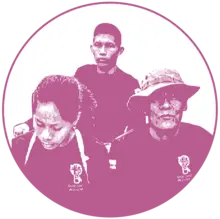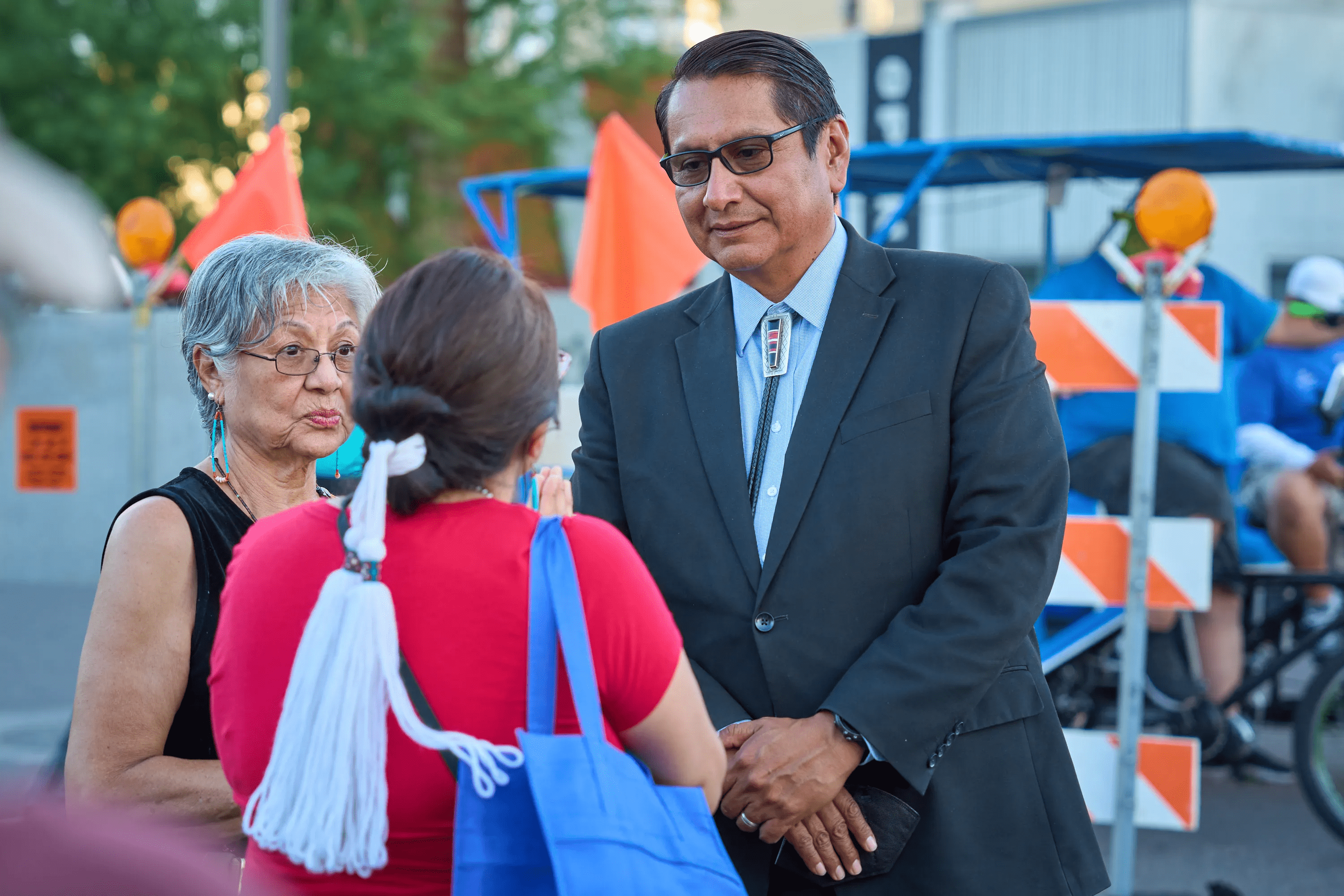Native-led voting rights groups are celebrating the defeat earlier this month of Proposition 309, a measure that would have added voter identification requirements.
The grassroots groups say Proposition 309 would have placed another obstacle for Native voters by changing Arizona's voter identification and mail-in ballot procedures. The measure would have required a voter to include their date of birth and voter identification number in the affidavit on mail-in ballots. It would have required photo ID for in-person voting, doing away with the current method of voters to use two forms of identification without a photo if they don't have a photo I.D.
“The context of my concern as a tribal leader, for one of 22 tribal nations in Arizona, is the long history of tribal voters having to overcome obstacles and voter suppression in order to vote,” said Martin Harvier, president of the Salt River Pima-Maricopa Indian Community. “You may remember that Native people only became citizens in this country in 1924. Since that time there have been numerous obstacles for Native people to participate in elections.”

As a nonprofit journalism organization, we depend on your support to fund coverage of Indigenous issues and communities. Donate any amount today to become a Pulitzer Center Champion and receive exclusive benefits!
Harvier joined groups like Indigenous Baaja Ádaaní Al Son, All Voting Is Local Action, Progress Arizona, ADRC Action, One Arizona, and Opportunity Arizona at a press conference earlier this week in the Salt River community to talk about the defeat of Proposition 309.
Although critics said the ballot measure was a tactic to suppress votes, especially Native votes, Arizona Sen. J.D. Mesnard, R-Chandler, one of the sponsors, insisted that wasn’t true, defending the measure during a live debate earlier this year with Pinny Sheoran, president of the the League of Women Voters of Arizona.
During the Sept. 20, debate Mesnard claimed a "crisis of confidence" as the reason behind the measure. Sheoran noted that the measure would impose difficulties on Indigenous voters, perhaps excluding them from voting.
"Tribal IDs, as long as there is a photo there, that's still OK," said Mesnard, who didn't touch on the subject beyond that. He said the measure wouldn't exclude voters and that anyone who doesn't have a photo ID can get it free if it's for voting purposes.
Other conservative groups such as the Arizona Free Enterprise Club, Goldwater Institute, Republican Liberty Caucus of Arizona supported Proposition 309. The campaign for the measure was being led by Arizonans for Voter ID.
“Prop 309 was a cynical ploy by politicians by giving away voting rights,” said Alex Alvarez, executive director of Progress Arizona. Alvarez said the measure added barriers to mail-in voting, "a process that Arizona voters, regardless of party registration, has used for decades. We proved that voters in this state trust the vote by mail system.”
Voting obstacles aren't new for Indigenous people
Alex Gulotta, Arizona state director of All Voting Is Local Action, said Proposition 309 was a tool for voter suppression. During the press conference, he said when Texas adopted a similar ballot measure that added additional requirements for mail-in voting, the rejection rate for ballots went from 1% to 13%.
“They were rejected not because these were people that weren’t eligible, but because these were people who couldn't comply with new requirements,” said Gulotta. “They couldn’t put all the numbers on the ballots. They made mistakes on the ballots. They didn’t get their ballots cured on time. These were ballots that were rejected due to technicality. It was a big gotcha.”
In Arizona, 12 to 13% of mail-in ballots would add up to about 250,000 voters.
The obstacles for Native voters is nothing new for some, especially elders who were born at home and issued a delayed birth certificate or who don’t have a birth certificate. They may not know their government-issued birthday or may face confusion because different government agencies regularly assign different birth dates. The lack of street-level rural addresses has also created problems at polling places, where voters with post office boxes have been turned away.
Traveling to obtain government identification can also be a challenge for tribal members. On the Navajo Nation, it can take hours one way for voters to travel to certain offices that can issue a card, on top of other factors such as time and gas.
“I’m thinking of all the young men and women in the boondocks of northern and southern Arizona, in the sticks,” said Eric Descheenie, executive director of Indigenous Baaja Ádaaní Al Son. “Where young folks spoke with their parents and grandparents, oftentimes in a different language other than English, on the complexities of voting in Arizona and explaining the details of Proposition 309 and what it actually does. I express gratitude to them because without them, we probably wouldn't haven’t arrived where we are today.”
Descheenie, who is from Chinle, said his mother was born in a hogan, traditional Diné home, and because of this she was never given a birth certificate. This would have led to numerous challenges for her to get the identification Proposition 309 was demanding.
A former member of the Arizona House of Representatives, Descheenie recollected in 2018 the oil paintings of former Arizona House speakers, dating back to the 1900s, and how they hung in the back room of the Arizona House.
“I said if they had their way I would not be standing on that House floor,” said Descheenie. “In other words we could not vote, let alone hold elected office. If you go to the House today, those oil painting are removed and instead what sits there are weaving by Navjao and other Indigenous people.”
Although Proposition 309 did not succeed, advocates believe there will be other similar ballot measures in the future. Gulotta said many of the items found in Proposition 309 could come back as standalone legislation, and should this happen, he hopes those bills will either be voted down or vetoed.
“I think it is likely there will be a number of anti-voter policies in the Legislature this session as there has been for the past several sessions,” said Gulotta. “Last session there were over 140 anti-voter bills that our coalition fought against. We were successful in most of them, but not all of them. We will continue to have similar fights."







